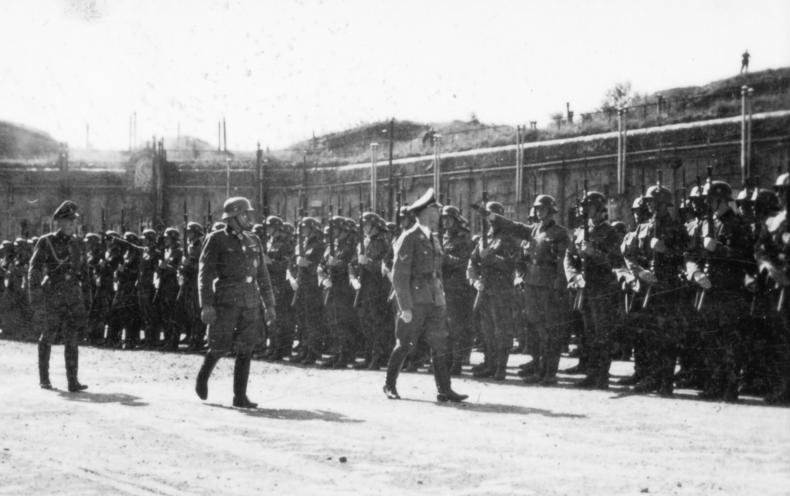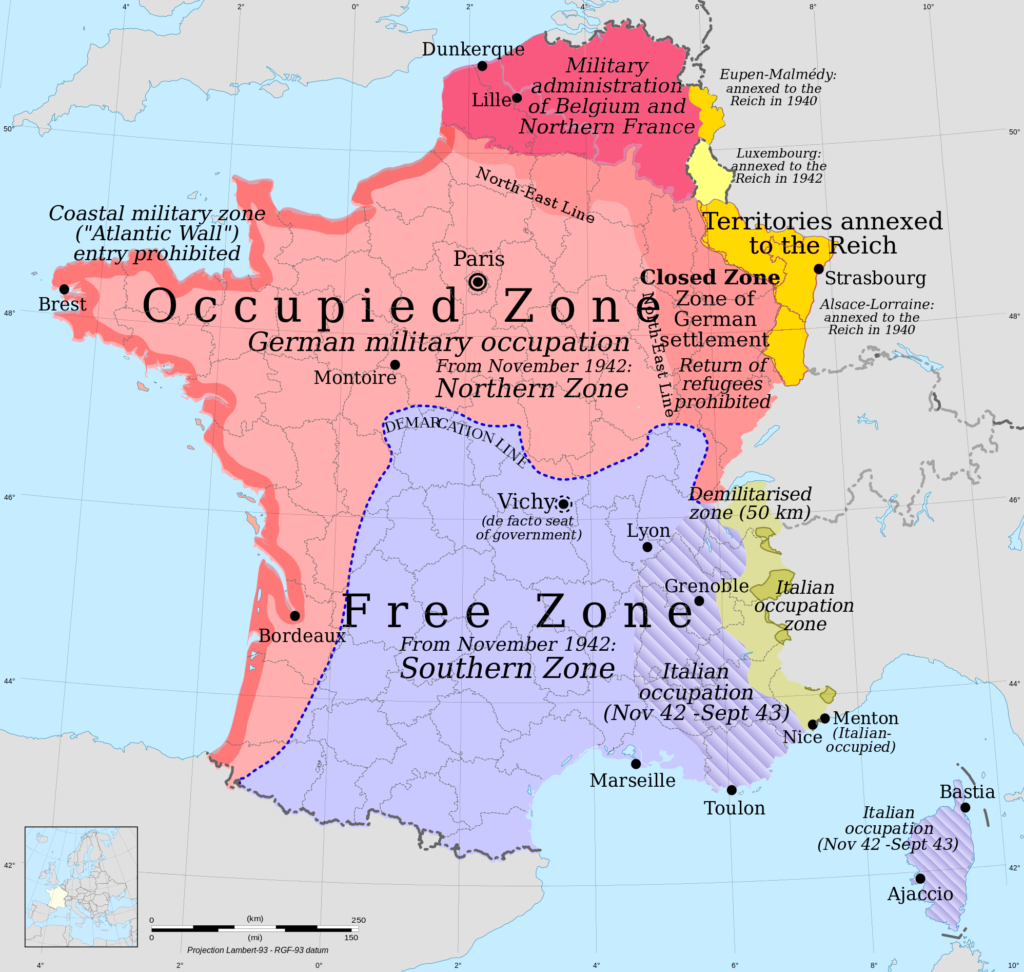ALBUM – German Occupation of Lorraine in WW2
Summary
Lorraine (Lothringen) is an area in eastern France on the German border. The rich agricultural and industrial region changed hands between France and Germany several times over the last few centuries. In May/June, 1940, early in World War 2, Nazi Germany invaded western Europe, taking Belgium, the Netherlands, Luxembourg, and much of France, including Lorraine. The Germans annexed Lorraine along with Alsace and occupied the region until the Allies liberated the region including it’s major city Metz on Dec 13, 1944.
Fast Facts
Region: Western Europe
Group: German Occupations
Classification: Military Occupation
Prior Regime: Republic of France
Key Dates:
1940, May 10–Jun 25 – The Fall of France, Belgium, Netherlands and Luxembourg
1940, Nov 30 – Lorraine officially annexed into the Reich
1942, Jan 1 – Lorraine residents designated as German citizens.
1942, Aug 25 – Germany began forcibly inducting men from Alsace and Lorraine into the German Army
1944, Dec 13 – Lorraine liberated with the Allied re-taking of Metz
Following Regime: Republic of France
First Stamp Issued: 1940, Aug 21
Scott Catalogue: France, Lorraine, Issued under German Occupation (N43 – N58)
Pick Catalogue: France R-135-140 (currency for all occupied areas)
History of the German Occupation of Lorraine

With the defeat of France in the Franco Prussian War and the creation of the German Empire, France was forced to cede Alsace along with Lorraine to Germany in 1871. The area remained an integral part of Germany until their defeat in World War 1. Alsace and Loraine where returned to France after war, in the Treaty of Versailles in 1919.
With the success of the invasion of Poland in 1939, Nazi Germany turned their eyes westward. Finally, on May 10, 1940 German forces began their assault on Belgium and the Netherlands, as a precursor for invading France. After just six weeks, German forces had taken the lowland counties of Belgium, the Netherlands and Luxembourg, as well as much of France including Alsace. The French and the Allies were crushed, with the taking of Paris on Jun 13th and the overall surrender of France on June 22, 1940. Hitler added to the humiliation by insisting that the documents be signed on the same railway car used when Germany had surrendered in 1918.
After the occupation, Hitler enacted a series of “secret laws” which officially annexed Alsace and Lorraine into Germany. On Mar 22, 1941, Alsace was joined with Baden to form a single administrative unit called Gau Baden-Alsace. This was followed by a proclamation on Jan 1, 1942, that all residents of Alsace and Lorraine were considered as German citizens, requiring them to learn and use German. French and Alsatian languages were outlawed. Beginning on Aug 25, 1942, authorities instituted a forced draft of into the Nazi army. About 130,000 men from the Lorraine and Alsace were conscripted, most being sent off to the Eastern front to fight the Russians. More than a third of those drafted never returned.
As the war continued, the Allies eventually regrouped their forces and the battle for Europe turned. On Jun 6, 1944, the Allies launched “Operation Overlord”, better known as the Battle of Normandy. Allied forces pushed eastward, as they began retaking France. Bitter fighting continued, but a great moral and strategic victory was achieved then they retook Paris on Aug 25th, 1944. As they continued eastward, Allied armies were held at Metz in Lorraine for over three months. Eventually, the last holdouts of German solders were driven out of Metz on Dec 13, 1944, and Lorraine was liberated.
After the war, Lorraine was returned to the Republic of France.
Stamps
 ALBUM
ALBUM
After the invasion and occupation of France in June, 1940, French stamps continued to be valid until Aug 25, 1940. On Aug 21, 1940, German occupational forces issued sixteen denominations (3pf to 100pf) of German Reich Hindenburg stamps overprinted overprinted “Lothringen” in black.
The same stamps, with different overprints, were issued for Alsace (Aug 15, 1940) and Luxembourg (Oct 1, 1940). Stamps of Alsace, Lorraine and Luxembourg were valid in all regions including Germany proper.
“Lothringen” stamps remained valid until Jan 1, 1942, when they were replaced with stamps of the German Reich.
Banknotes
In 1939, the Germans issued currency to be used in all occupied areas (Belgium, Denmark, Greece, France, Luxembourg, Norway, Poland, Soviet Union, Yugoslavia). This includes Lorraine. Six notes were issued in the following denominations: 50 pfennig, 1, 2, 5, 20, 50 mark. This currency was used until Alsace and Lorraine were annexed into Germany on Jan 1, 1942.
Links
Annexation of the Moselle from Wikiwand (FR)
The Battle of Metz 1944, from Wikipedia
Occupational Issue 1940-45 Western Europe from bills-bunker.de
Stamps of the German Occupation of Lorraine





